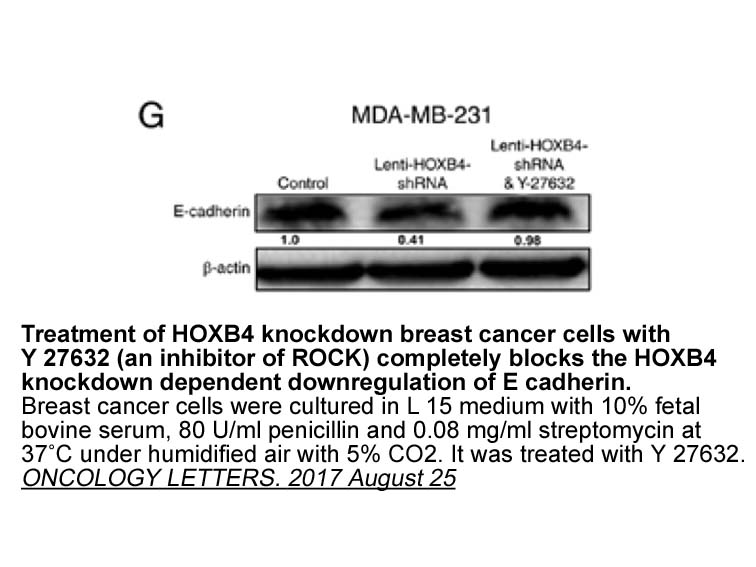Archives
It must be noted that while the accumulated evidence
It must be noted that while the accumulated evidence on molecular mechanisms has resulted in well-established experimental methods to externally act on single-cell characteristics and networks, safe and efficient external methods to modify multicellular states are still a matter of basic research. Conceptually significant approaches based on model animals have recently been described, and new theoretical approaches and experimental techniques to externally modulate bioelectric potentials are now under study [7,[33], [34], [35], [36],55,[91], [92], [93]]. However, the relevant biological circuitry and average magnitudes to be controlled at the ensemble-averaged level are yet to be properly identified in each experimental case. In particular, the understanding of ion channel activity in tumorigenesis requires the inte gration of different biochemical and biophysical concepts into complex transcriptional and bioelectrical networks [15,16,89,135].
Also, experimental procedures for the manipulation of specific ion GW1929 synthesis require tight spatio-temporal control because these channels also control healthy tissues. New techniques attempting to achieve a spatially-distributed control of small multicellular domains must permit good spatio-temporal resolution, either by localized application or by taking advantage of the transcriptional specificity of individual channel types. In addition to patterned light and optogenetics [55], some experimental candidates to be developed further are nanoparticle-cell binding and modulation of ion channel permeability [91,92], conducting polymer microwires allowing for spatio-temporally localized electrical pulses [93], forced cell polarization/depolarization via channel blockers or local injection of mRNA that encodes particular ion channels [89,136], and new efficient methods for the intercellular transference of specific small microRNAs [90].
In conclusion, previous and emerging experimental evidences suggest that the spatio-temporal manipulation and control of cell membrane potentials can produce significant outcomes in processes such as regeneration and tumorigenesis. It should be noted, however, that this manipulation may lead to complex and diverse experimental outcomes because of our incomplete understanding of the basic bioelectrical mechanisms [140]. In particular, acting on a specific ion channel or promoting a local hyperpolarization might result in a variety of unexpected results both in the short and the long-term [140] because of the complex coupling between biochemical, biomechanical and bioelectrical effects. It is in this context that additional experimental [77] and theoretical [[32], [33], [34], [35], [36]] studies emphasizing the basic bioelectrical concepts involved should be useful.
gration of different biochemical and biophysical concepts into complex transcriptional and bioelectrical networks [15,16,89,135].
Also, experimental procedures for the manipulation of specific ion GW1929 synthesis require tight spatio-temporal control because these channels also control healthy tissues. New techniques attempting to achieve a spatially-distributed control of small multicellular domains must permit good spatio-temporal resolution, either by localized application or by taking advantage of the transcriptional specificity of individual channel types. In addition to patterned light and optogenetics [55], some experimental candidates to be developed further are nanoparticle-cell binding and modulation of ion channel permeability [91,92], conducting polymer microwires allowing for spatio-temporally localized electrical pulses [93], forced cell polarization/depolarization via channel blockers or local injection of mRNA that encodes particular ion channels [89,136], and new efficient methods for the intercellular transference of specific small microRNAs [90].
In conclusion, previous and emerging experimental evidences suggest that the spatio-temporal manipulation and control of cell membrane potentials can produce significant outcomes in processes such as regeneration and tumorigenesis. It should be noted, however, that this manipulation may lead to complex and diverse experimental outcomes because of our incomplete understanding of the basic bioelectrical mechanisms [140]. In particular, acting on a specific ion channel or promoting a local hyperpolarization might result in a variety of unexpected results both in the short and the long-term [140] because of the complex coupling between biochemical, biomechanical and bioelectrical effects. It is in this context that additional experimental [77] and theoretical [[32], [33], [34], [35], [36]] studies emphasizing the basic bioelectrical concepts involved should be useful.
Acknowledgments
J.C. and S.M. acknowledge the financial support of the Spanish Ministry of Economic Affairs and Competitiveness and FEDER (MAT2015-65011-P). M.L. and A.P. gratefully acknowledge support via an Allen Discovery Center award from The Paul G. Allen Frontiers Group (12171). M.L. also thanks the G. Harold and Leila Y. Mathers Charitable Foundation (TFU141), the National Science Foundation award #CBET-0939511, the W. M. KECK Foundation (5903), and the Templeton World Charity Foundation (TWCF0089/AB55).
Introduction
It has been well established that appropriate levels of protein phosphorylation are essential to maintain cardiac function and play an important role in the development of cardiac arrhythmias. Phosphorylation states of key substrates are modulated by protein kinases (PKs) and protein phosphatases (PPs) via posttranscriptional and posttranslational mechanisms [1], [2], [3], [4], [5], [6].  Although the focus of studies on protein phosphorylation has been primarily on the role of PKs in cardiovascular diseases (CVDs) and their potential as therapeutic targets [3], more recent research has shown an emerging interest in the role of PPs and the potential of phosphatase-regulating drugs [7], [8], [9], [10], [11], [12], [13], [14], [15], [16], [17], [18], [19].
Although the focus of studies on protein phosphorylation has been primarily on the role of PKs in cardiovascular diseases (CVDs) and their potential as therapeutic targets [3], more recent research has shown an emerging interest in the role of PPs and the potential of phosphatase-regulating drugs [7], [8], [9], [10], [11], [12], [13], [14], [15], [16], [17], [18], [19].